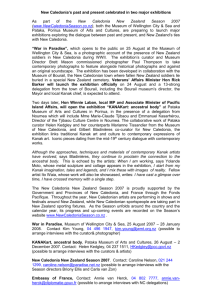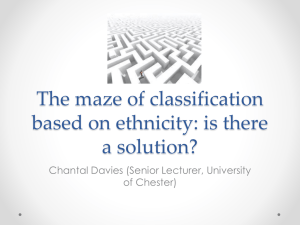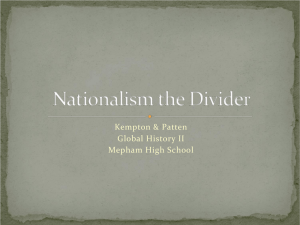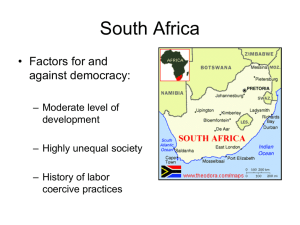Does it pay for Indigenous youth to go to school? Ethnic inequalities
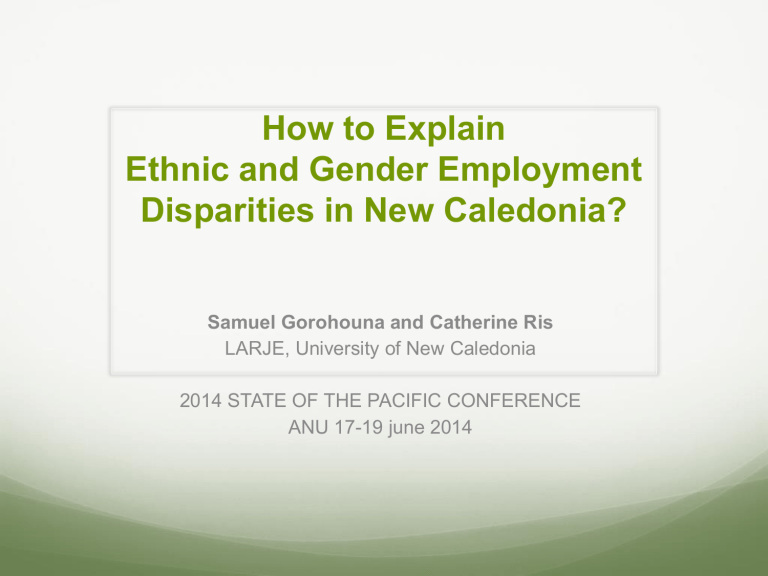
How to Explain
Ethnic and Gender Employment
Disparities in New Caledonia?
Samuel Gorohouna and Catherine Ris
LARJE, University of New Caledonia
2014 STATE OF THE PACIFIC CONFERENCE
ANU 17-19 june 2014
New Caledonia
Specific political organization :
Very large autonomy from France
Engaged in an emancipation process (transfers of responsibility from the French state to New Caledonia, referendum on the issue of independence)
NC differs from other French overseas territories and from other islands in the Pacific :
One of the largest economies in the Pacific Island region
High standard of living (GDP per capita comparable to New Zealand)
High growth rate (3.3% per year between 2000 and 2011)
High level of human development (HDI = 0.87)
Rich but Inequal: Geographic & ethnic Inequalities
Median income in the South is 2.5 times higher than in the Loyalty
Islands Province
Median income in the South is twice as high as in the
North Province
Population in 2009
Other 6%
Pacific
Islanders
12%
Several communitie s 8% na 1%
European
29%
Kanak 40%
Asian
3%
Ethnic Inequalities
Kanak have lower socio economic outcomes than other New Caledonians
25%
Graduated from
Higher Education
20%
15%
10%
5%
0%
Kanak Non-Kanak
10%
5%
0%
30%
Unemployment rate
25%
20%
15%
Kanak Non-Kanak
The data
-NC: to analyze the evolution of the situation with regards to education and employment for indigenous and nonindigenous people, we use:
1996 and 2009 Censuses (ISEE)
Individual characteristics: gender, age, province of residence, ethnicity, level of education etc.
random sample: 50 897 observations.
| Marginal effects | on the probabilities of Employment
Ethnic Gap Male
Ethnic Gap Female
Ethnic Gap Whole population
Gender gap Non-Kanak
Gender gap Kanak
Gender gap Whole population
0
2009
1996
0,05 0,1 0,15 0,2 0,25 0,3 0,35
Blinder Oaxaca decomposition
Blinder-Oaxaca decomposition : “explained” and “unexplained part” of inequalities?
the unexplained part of the gap in employment between Kanak and non-
Kanak remain almost the same between 1996 and 2009
ethnicity seems to play a stronger role for men rather than for women.
“unexplained part”: other explanations
Observed characteristics
Social background
Health
Previous experience on the labor market
Number of children
Unobserved factors
The potential lack of job-related networks by family members and friends
Weaker motivation affected by previous experiences in the labour market, as experience or perception of discrimination may cause discouraged job seekers
Conclusions
Differences are generally greater between genders than between ethnic groups
Estimates of the ethnic gap are larger for males than for females
Blinder-Oaxaca decomposition :
ethnicity seems to play a stronger role for men rather than for women.


